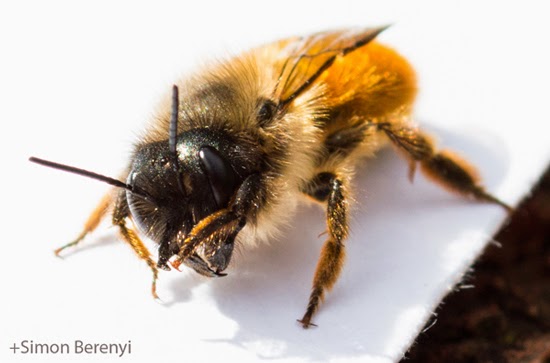Masonry Bees
Masonry Bees - Not Wasps
Masonry Bees - Are They Dangerous?
 |
| Masonry Bees Are Often Confused With Wasps |
Yes, stings from solitary bees are indeed rare, but they do happen.
Casualties reported that the stings were not left embedded in the skin like those of Honey Bees or that severe reactions to those bee stings occur.
It's because they sometimes nest close to the ground, in air-bricks and door frames, that makes them such a concern to property owners and parents of young children.
What Damage Do Masonry Bees Cause?
Masonry bees enter our homes through air bricks, window vents, window frames, extractor vents, poor rendering and crumbling mortar between bricks and stone. You will also see them buzzing into the gaps between tiles. |
| Masonry Bees in Window Frames |
 |
| Masonry Bees are Common in Wall Vents |
 |
| Masonry Bees Thrive Between Tiles on Warm Roofs |
Once embedded in a property, they can create robust tunnel systems or galleries in the fabric of the building, into which they lay eggs and prepare the next generation of bees.
These holes can then reduce the weather resistance of your home, leading to further weaknesses in the fabric of the building and more nesting opportunities for the bees next year.
How Are Masonry Bees Controlled?
For the most part, they can be controlled without pesticides by filling and repairing any damage in late summer. The other method is pesticides that are injected into the brood chambers and entrances. This provides a very swift level of control.Do Masonry Bees Need Controlling?
If you have sting allergies, large populations damaging your building or have a fear of bees, then control is likely to be the only option available to you.If the Masonry bees are in an outbuilding or in a place where they are not bothering you, then you could just as quickly leave them to get on with things. The choice is yours.
Get more pest control help and advice.
By Simon Berenyi at Bristol Pest Control -https://www.palehorsepestcontrol.uk/masonry-bees



Comments
Post a Comment